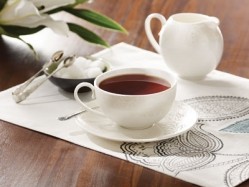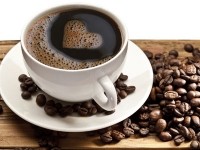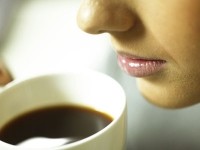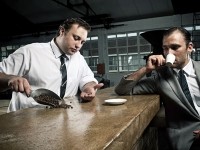Non-alcoholic drinks: How to improve your restaurant's tea and coffee offering

In the first part of our series on non-alcoholic drinks we look at how restaurants, hotels and pubs can take inspiration from retailers and coffee shops as well as from other areas of their own businesses to help improve their tea and coffee offering.
Discerning customers
The hospitality sector has been a source of inspiration for retail in recent times. With more freedom to experiment, it can be the place where a food or drink trend will start before it gets picked up by the supermarkets.
There is one area, however, where restaurants, pubs and hotels arguably lag behind the retailers and that's in offering a wide variety of tea and coffee to their customers.
Visit the tea and coffee aisle of a supermarket and you'll find varying blends of black tea, flavoured green teas and herbal or fruit teas alongside packets of coffee beans from Brazil and Kenya and blends made to certain strengths or styles. Yet, peruse a restaurant menu and more often than not the options will simply state 'tea' or 'coffee'.
According to Allegra Strategies' latest coffee report, the UK consumer's interest in coffee is growing fast with the coffee shop market set to turnover more than £8bn by 2017 as it grows to an estimated 20,000 outlets.
Almost half of those outlets are estimated to be independent or artisan coffee shops where customers visit expecting to try a cup of single origin filter coffee or an espresso made from a special in-house blend rather than the less-descriptive ‘latte’ or ‘americano’.
Consumers are becoming more discerning about the tea they drink too. While black tea holds the greatest market share (70 per cent) speciality teas are seeing a 5 per cent growth year-on-year and are an area where John Sutcliffe, out of home controller for Taylors of Harrogate is expecting to focus his attention later this year.
So if the consumer is looking for more choice and, as a survey by Nespresso shows, expecting better quality, shouldn't the restaurant sector start giving them that and grab some of that market share for themselves?
Care and attention
Jeremy Torz, co-owner of coffee company Union Hand Roasted believes there are opportunities for restaurants, pubs and hotels who can spare a little time to focus their attention on this area.
"The restaurant part of the hospitality industry has kind of ignored what's going on in the coffee world in the last three to four years when we have seen much faster levels of change in the coffee origins, the quality offered and the skills of the baristas presenting coffee to the public,” he says.
“We’ve seen a real explosion in the number of independent boutique cafes and that’s because of an increasing awareness by consumers that farmers are producing some amazing coffees. However, that improving quality has largely been missed by restaurants where all too often the coffee is just coffee flavoured water. They need to catch up to be part of it.”
To kick-start interest in hot beverages, Torz recommends treating them with the same care and attention as you would with the food or wine you serve. After all, he says, a cup of coffee or tea will often be your last chance to impress the customer before they walk out the door.
Put prominence on provenance
If you’ve gone to the effort of highlighting where your fish or meat has come from on your menu and taken time to pick wines from exciting new wine regions, then, as experts will tell you, it can seem at odds to your business not to do the same with tea and coffee.
“Nowadays people have more sophisticated palates and are able to appreciate taste profiles of coffees and understand how country of origin affects taste, just like they do with their wine,” warns Matt Lord, foodservice business development manager at Cafédirect.
“They also want to know the provenance and story behind where their coffee comes from.”
Indeed, in the wake of the horsemeat scandal this can be more important than ever.
“In our experience people are becoming more and more discerning when it comes to the ethical decisions they make as consumers. In the light of recent scandals in the food industry consumers are extremely aware of the provenance of what they consume and this is as important for coffee as it is for meat, fish and other products,” adds Ian Macdonald, Nespresso's B2B commercial manager UK and Ireland.
One restaurant where coffee provenance is highlighted is Ransome’s Dock in London. Union Hand Roasted started working with chef-patron Martin Lamb and his staff five years ago to find the right style of coffee for his business. Torz says just a little bit of education in this area has paid off.
“Staff can now talk to customers and recommend not only an espresso or a cafetiere coffee, but also a Brazilian or Rwandan coffee, much in the same way they’d recommend a Sauvignon Blanc from New Zealand or France,” he adds.
Provenance and taste is something Kate Gover, owner of tea supplier Lahloo tea has based her business on.
She has worked with a number of restaurants, including Casamia near Bristol and Cowley Manor in the Cotswolds, to provide them with the right teas and such has been her passion to promote provenance that some of her clients are now even asking for posters to be created with details of the teas on.
“They’re interested to know where the tea has come from they are serving and want to be able to pass that information on to their customers in an easy way,” she says.
Treat it like wine
As mentioned earlier, paying a similar level of attention to tea and coffee menus as you do your wine lists – listing a range of varieties and adding helpful tasting notes - is one way to approach tea and coffee with renewed vigour, but it can also go some way to meeting growing customer expectations.
“As customers become more and more discerning in their coffee tastes they require more choice. In the same way that they would expect a wine list and expert sommelier in a high-end establishment, more and more consumers expect a coffee menu and coffee expert to supplement their experience at the end of dinner,” says Macdonald of Nespresso, a company which actually created a Nespresso Coffee Sommelier Programme in 2009 to teach professional sommeliers how to recommend its eight Grand Crus coffees created for restaurants and hotels, to guests.
His thoughts are echoed by Sutcliffe of Taylors of Harrogate, who says tea and coffee is getting the same kind of attention today that wine experienced in the UK several years ago.
“There’s a natural link to tea and coffee now and wine say 10 to 15 years ago,” he says, “there is a lot of work going on to push the quality message up and understanding of the different types in consumers’ minds.”
As with wine, staff tastings are the key to choosing the right blend for your business and will allow staff to speak confidently about the product they are selling, says Gover, who has produced a list of teas to accompany the menu at Casa Mia.
“We sat down and tasted and tasted before we came up with our list,” she says, “it was a great experience and everyone had input, much as you’d do with a wine tasting. We found that Himalayan Oolong is fantastic with chocolate, for example.”
Think like a coffee shop
If you want to capture the same level of interest in your coffee and tea as the independent coffee shops and tearooms do in theirs, you have to start thinking a little bit like them says Cafédirect’s Lord, whose company was tasked with helping Liverpool-based bar Café Tabac to boost coffee sales.
Surrounded by independent coffee shops, the alcohol-led bar had found trade dropping during the day and its owners wanted to grab back some of the non-alcoholic drinks market from their neighbours.
Cafédirect suggested making a few changes and found that after they were implemented, not only did the venue sell better quality coffee, but it saw sales rise 300 per cent.
“When we first met with them, when you walked in the venue you were faced with a bar full of wine and liquor bottles, which, while beneficial for marketing its alcoholic drinks, just doesn’t scream ‘good coffee’,” recounts Lord.
“We immediately advised them to change from a fully automatic bean to cup machine to a traditional machine and position it pride of place on the bar, visible from the street.”
Coupled with staff training and a marketing campaign, Café Tabac’s coffee sales have gone up 300 per cent in three months since they focused on their coffee offering, which is helping the rest of the business too.
“The bar is getting new customers through the door in the mornings who are then returning in the evening,” adds Lord.
“One of Café Tabac’s speciality alcoholic drinks is the espresso martini, which now tastes even better than ever. In fact it has become their signature cocktail.”
Engage and train staff
The final tip to ensuring that efforts to improve your hot beverage menu is a success is to, as with most new innovations, engage and educate your staff.
“If you train your team to think of tea in the same way as they do with wine, then they’ll offer it as an alternative to wine," believes Gover of Lahloo Tea. "Tea can also make a great digestif at the end of a meal instead of coffee and brandy, so that's another option, but it all comes down to the information staff are given."
Every company stocking Lahloo is offered training about the teas on offer. "I will try and work with the outlet's barista, but if I can't, I’ll train the whole team," says Gover.
"I get them to taste them and learn where they are from as well as how to make it to check they are serving it in the right way. You shouldn’t pour boiling water on green tea leaves for example because it can impair the flavour."
The same advice is offered for coffee, but with the addendum that knowing how to use the equipment used to make it, whether that be a machine, cafetiere or other, is essential.
Lord says: "High quality coffee with a known provenance and a full menu of different types of coffees appeals to today’s more sophisticated customer. Likewise, investing in a good quality machine is just as important for consistency and flavour while signaling to the customer that you take their coffee enjoyment seriously.
"Staff training is therefore important as well to ensure they know how to use the machine and produce a consistent end product."
He adds: “Overall, don’t get confused between low cost and good value. Opening up new revenue streams (eg the daytime market), offering something that the customer can’t replicate at home (eg the expert serve) and engaging the customer in the story behind the coffee will lead to loyal, happy customers and an ongoing boost to your profits."
Read and view all content on non-alcoholic drinks here.


























